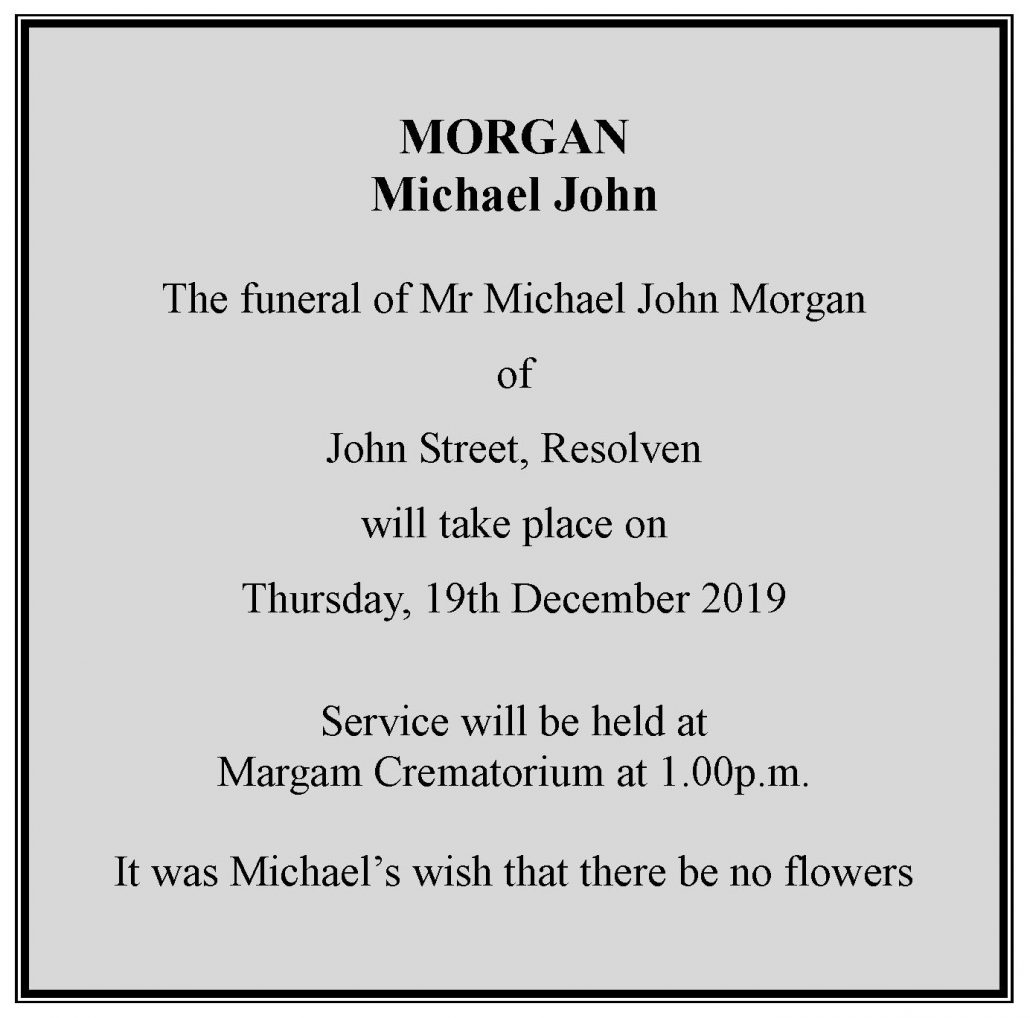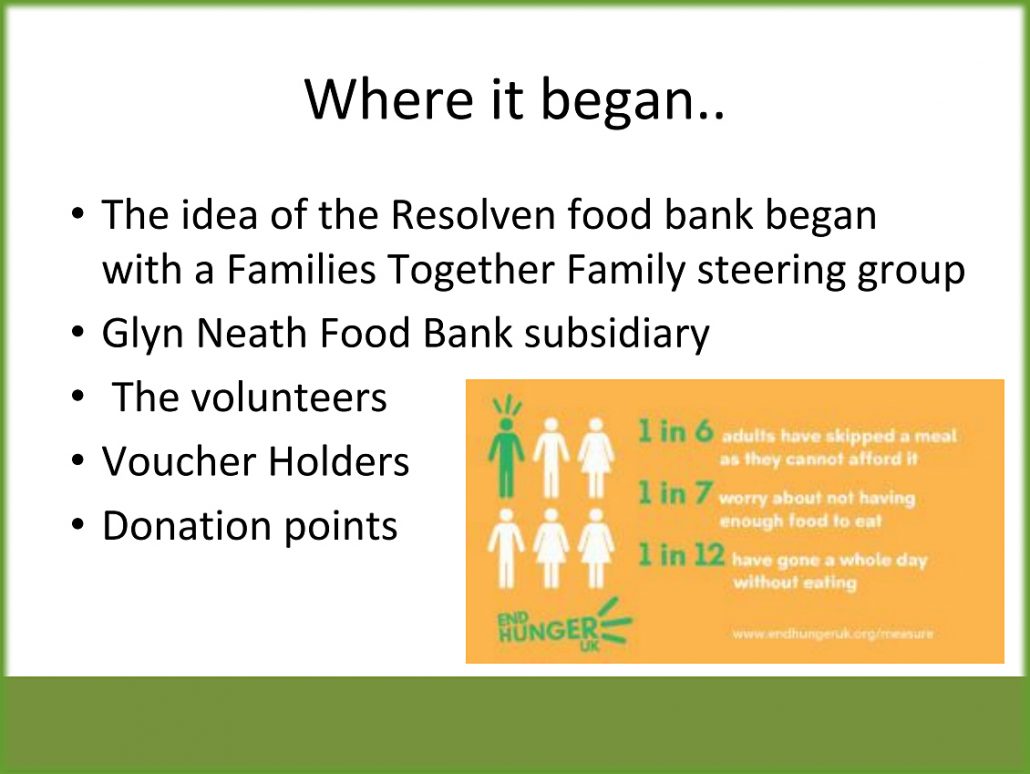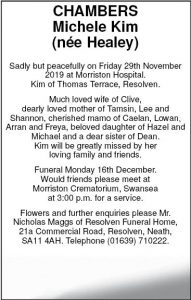Resolven Ladies’ Bowls Club Presentation Lunch
The awards for the Resolven Ladies’ Bowls Club 2019 winners were presented during a festive, lively and much enjoyed Christmas lunch in the Lamb and Flag, Glynneath on the 9th of December.

Audrey Grifiths/Christine Twaite/ Ceri Holmes

2019 Club Members
The proceedings began with an apology for absence from Club President Iris Thomas who is in Neath Port Talbot Hospital at the moment.
“I’m sorry I can’t be there today. I’m otherwise engaged. My one regret is is not being able to present Brenda with her trophy-one of the oldest winners. Have an extra drink for me!
I wish you all a very Merry Christmas and a Happy New Year”
We were all delighted to get Iris’s message and all hope she gets better soon. But in her absence all the awards, bar the one for Club Champion, were presented by Club Chairman, Brenda Rees. The Club Champion trophy was presented by Anita Morgan, because Brenda herself was the winner and at 83 became the second oldest to pick up the award.
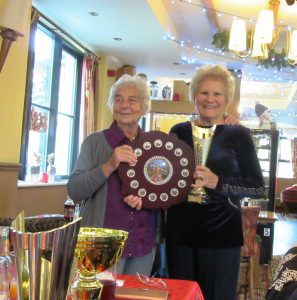
Anita and Brenda
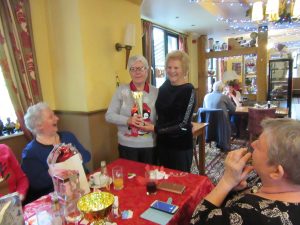 Club Championship Runner-up Sec/Treasurer Carwen Thomas and Brenda
Club Championship Runner-up Sec/Treasurer Carwen Thomas and Brenda
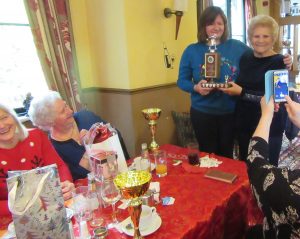
Two Woods Champion , Club Captain Ceri Holmes and Brenda
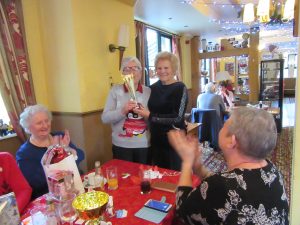
Two Wood Runner-up Carwen Thomas and Brenda
Carwen appears to be kissing the trophy, maybe thinking ”I wus robbed” in the Final against her daughter Ceri. It was a great game finishing on an extra end when the game was tied. Ceri took the end by one shot.
The final presentation was of 4 Hot Shots Certificates, presented by Brenda to the rink that scored all 8 shots available in one end in a league game against another club.
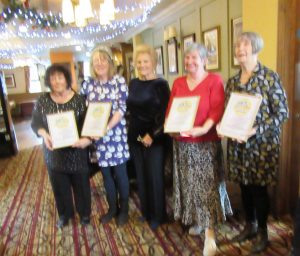
Audrey Griffiths/Christine Twaite/Maureen Colmer/Janis John (with Cnairman Brenda Rees)

NEW MEMBERS ARE MADE VERY WELCOME.
Watch this space for news of the 2020 season
All the Fun of the Fayre
Resolven Community Events Group organised another delightful “getogether” for the village on Saturday-the Christmas Fayre. The weather was dull and gloomy outside, but inside St. David’s Church Hall there was a kaleidoscope of colour and smiling faces. RDN photographer Mike Davies was there to capture these images for us.






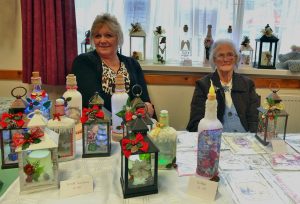
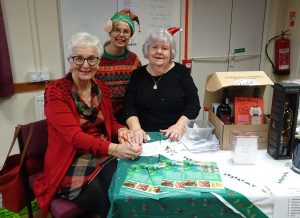

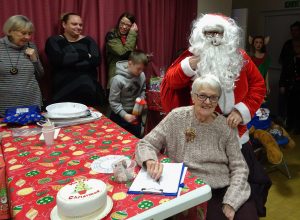
IMAGES by MIKE DAVIES (RDN photographer)
Christmas Concert by Ladies’ Choir
The concert was held on Monday the 2nd of December in Noddfa Newydd, Tonna and the choir can be heard in the Aberafon Shopping Centre on Saturday the 14th of December at 11.am.
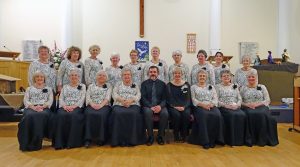
The choir was formed in May 1981 and six months later made their concert debut at the Gwyn hall Neath, with the band of the South Wales constabulary, The choir does a lot of charitable work, and has helped to raise funds for various charities.
The choir has appeared in concerts in England, Ireland, Holland, and many parts of the Principality, with international artists such as Della Jones, Jason Howard, Anthony Stuart Lloyd and Gordon Back,. The choir has also taken part in BBC programmes including Songs of Paise at the Millennium Cardiff, also Lenny Henry Goes to Town. They have shared the stage with the Morriston Orpheus and Pontarddulais Male Voice Choirs, exchanged visits with the Wexford, South Woodham Ferrers, the Park Hall and the Stoke-on-Trent male voice choirs.
The Neath ladies inspired the ladies of both Wexford and South Woodham Ferrers to form choirs of their own, and the three ladies’ choirs have also met up to perform tri-choral concerts in Neath, Essex, and Ireland. The choir always have a busy programme of concerts, and weddings and charitable work.
The choir are always delighted to welcome new members it is a good way of making new friends, as well as making music. New choristers are welcome
Rehearsals Monday at 7pm Noddfa Newydd Tonna
Choir contacts
Chairperson—Mrs Maureen Davies 01639 644608
Treasurer——Mrs June Davies 01639 771224
Secretary——Mrs June Wilkinson 01639 890333
Valley Sunrise

Sunrise over the Vale of Neath
Taken on the 1st of December, 2019
MIKE DAVIES (RDN photographer)
Christmas Fayre

Family Auction

Fluenz and Fire Fighter Party
If you were unable to attend the ‘Fluenz and Fire Fighter Party’ on Wednesday 20th November but would still like to be immunised against Flu, please attend your regular baby clinic or contact the Surgery on 01639 505950 to book into a Nurse Appointment.

Information supplied by The Vale of Neath Practice
~ ~ ~
Milk Delivery
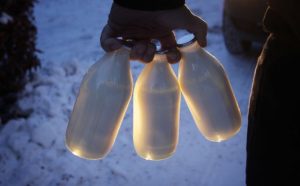 I have negotiated for Totally Welsh to start a milk delivery service in the Resolven, Abergarwed, Melincourt and Clyne area. This is a great way to reduce our plastic waste and go back to a more recyclable glass product. To start with they will be delivering Monday Wednesday and Fridays. If anyone is interested in having milk delivered could they please contact me at nealfrancis@hotmail.co.uk or 07784735055 and I can arrange for them to be added onto the round.
I have negotiated for Totally Welsh to start a milk delivery service in the Resolven, Abergarwed, Melincourt and Clyne area. This is a great way to reduce our plastic waste and go back to a more recyclable glass product. To start with they will be delivering Monday Wednesday and Fridays. If anyone is interested in having milk delivered could they please contact me at nealfrancis@hotmail.co.uk or 07784735055 and I can arrange for them to be added onto the round.
Neal Francis
Resolven Community Councillor.
A Report on the November Meeting of Resolven History Society– “Evacuees”
This month’s topic had been widely awaited by the members of the Society, since the story of the mass evacuation of children from the inner cities to the safer countryside is still within memory and equally poignant since the meeting coincided with the commemoration of the Armistice of 1918. However, Mr Peter Rees, who is a member of the Swansea Outreach Speakers of the History Association in Swansea, gave an insight which was perhaps different from the orthodox account of the lives of the evacuees themselves and the subsequent effect on social policy which is with us to this day.
Mr Rees began his talk by explaining how the policy of evacuation had its roots in the earlier bombing of the south of England during the Great War in which some thousand or so individuals had been killed by aerial bombing. The development of air forces during the 1920s and 30s, showed that the British Isles was now vulnerable to attack. This was highlighted by the Chinese invasion of Manchuria and the bombing of Guernica during the Spanish Civil War. The plan for the evacuation of children was drawn up as early as 1931 and explains how the evacuation took place so smoothly in 1939, in contrast to the lack of readiness of many other civil arrangements. Sir John Andersen (he of the shelter) was put in charge of the planning at the outbreak of war. The strategy was not short of critics, especially among women such as Anna Freud who saw it as inhumane and upper class (who sent their children away to boarding school in any case). It posed a terrible dilemma for parents and in fact only 50% of those children liable to evacuation actually left the inner cities, which were subsequently subject to the blitz. Indeed, other countries viewed evacuation differently. France dismissed it as a bad idea and Germany had a partial version. After the attack on Pearl Harbor, the USA considered it, but following a psychological study came to the conclusion that children were better left alone with their parents in terms of their mutual mental health. The Scots indeed, took a different tack and moved some parents with their children.
A billeting officer was appointed in the reception area to match the children to the families receiving them. He did have the power to force families to take evacuees but this did not happen often. Critics have described this process as a “slave market”, in which some of the children were seen as ready labour to work on farms or as “skivvies”. The experience of the children and the hosting families varied immensely, and it was quite evident that the children from the slum areas of inner cities found adjustment to their new homes very difficult. In Llanelli they were nicknamed “Sioni daps”, and an appeal from residents was made for better shoes. Some were emaciated, lice ridden and almost feral in the way they lived. This contrasted with the evacuation from more affluent areas which was sometimes greeted with relief by the local community as was reported in a story in the Tivyside Advertizer in Cardigan. At first the editor railed against an invasion of unruly children only to totally change his tune when he found out that it was a grammar school from the leafier suburbs of Liverpool that were coming. Wales indeed was seen as a very accommodating area for evacuation, with its strong social stability rotating around the chapel and family seen as a positive advantage. Indeed, many of the evacuees became very close to their adopted families, learned Welsh and even returned to live in Wales after the war. Many , subsequently wrote autobiographies on their experiences including Ken Fossegate, who had been evacuated to Cardiganshire and Beryl Matthews whose book “A Time to Remember”, narrated a harrowing tale of neglect by the local vicar, followed by a happier time resident in the local public house.
Education itself was a problem, in that the evacuees were taught by either old teachers on the verge (or recalled) from retirement or young and inexperienced (teachers were also called up as was the experience in Resolven school Ed). Sometimes the evacuees were taught separately from the local children or in a different building. In addition, it was common for whole school to be evacuated together and join a local secondary school (this was the experience of The Roan School in Greenwich, which was evacuated en bloc to Ammanford, Ed). Mr Rees, also stated that Swansea children were evacuated to Llanybydder following the blitz in the town and the destruction of Brynmill school, under the leadership of their teacher Mr Cooke Rees. Of course, they considered themselves to be different from the other evacuees since they still saw their parents. Parental visits were however rather problematic since quite often the children were so homesick they returned to Swansea with their parents. Indeed all the evacuees who had been interviewed after the war recalled the gnawing homesickness which never left them.
In conclusion, Peter Rees, drew attention to the fact that the evacuation of what were essentially slum children had metaphorically “turned over a stone of neglect”. Wales had been subjected to the 10% of the population which was unseen within inner cities. In 1943, the report “Our Towns”, highlighted the neglect of the inner cities. This contributed in no small measure to the Beveridge reforms undertaken by the post war Attlee government. The famous historian A.J.P. Taylor stated that it was the key to the establishment of the present Welfare State.
Following the war, the children returned home. However, this was not the end of the trauma. Some returned to find that their parents, who had not been in contact, were either both dead or widowed. Homes had been destroyed, and the psychological distress has been described as a double death. Sometimes parents were resentful, in that they did not recognise their children and criticised their different accents and ways. Some children actually made their way back to Wales after the war, married and stayed.
Following a lengthy question and answer session, it was rather emotional to find that several of the members (including the author of this report) were either the children of evacuees or had contact with the evacuees who had come to Resolven during the war. Indeed, one of the members is an evacuee whose family were evacuated to Aberdare and stayed after the war.
The Chairman thanked Mr Rees for a memorable talk which reminded him of the accuracy of the TV drama “Goodnight Mr Tom”.
Trefor Jones

